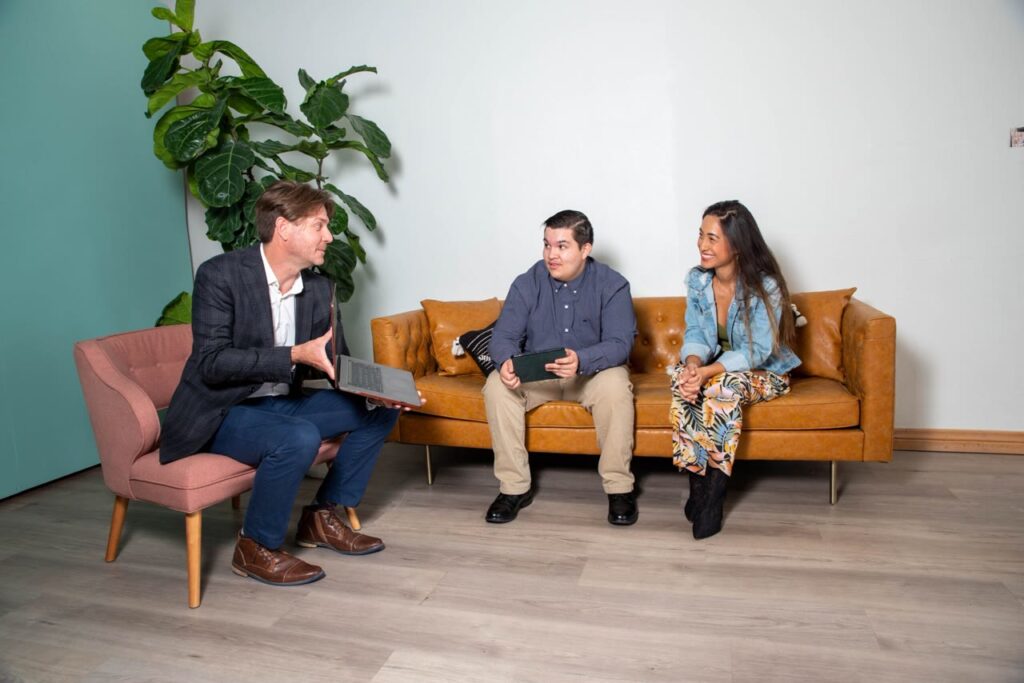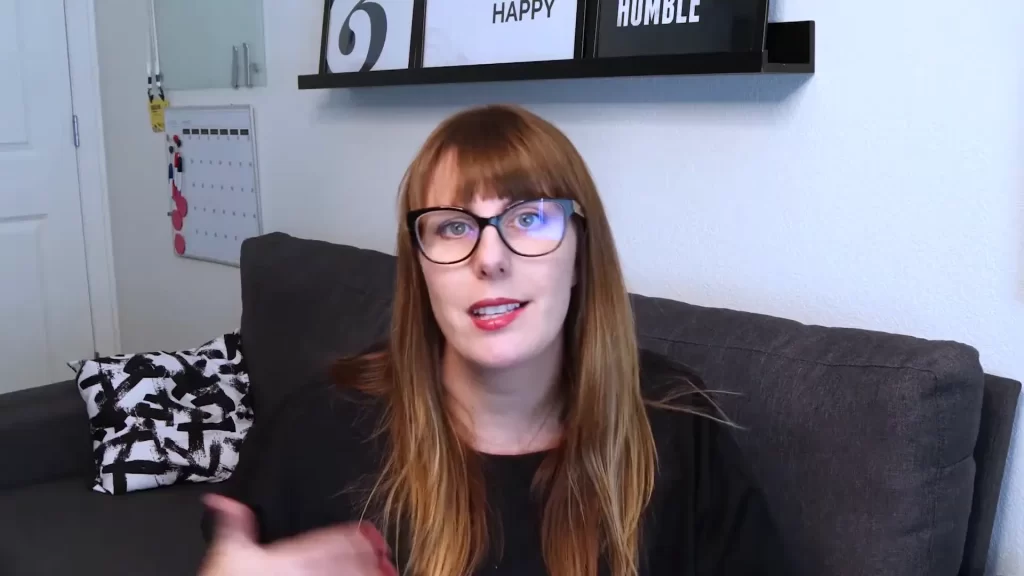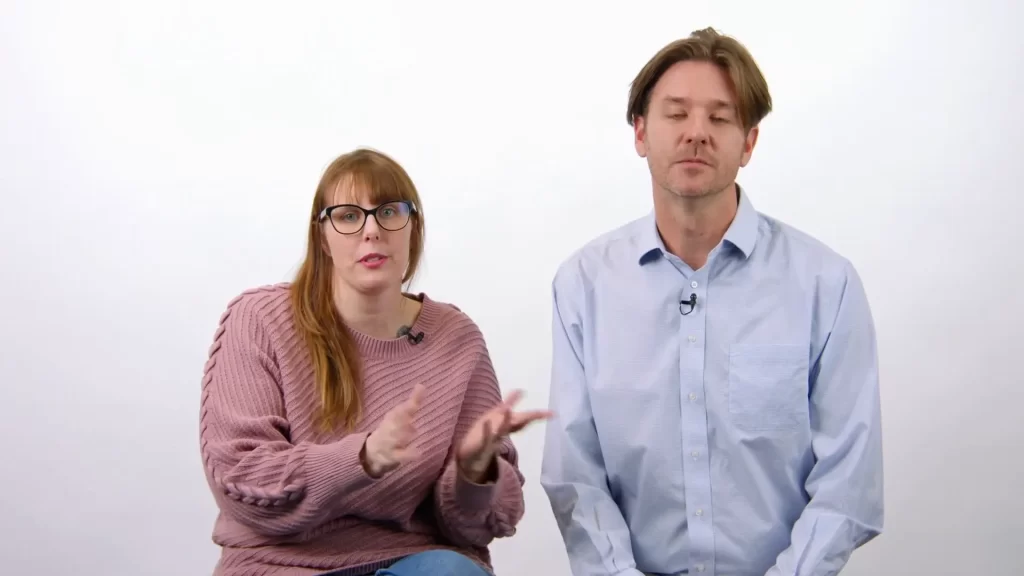Facing a WordPress error message can feel like a crisis when your carefully crafted content is held hostage by cryptic codes and malfunctioning plugins. Support forums can be a confusing mix of conflicting advice, but fear not WordPress users, this practical WordPress troubleshooting guide is here to equip you with the tools to overcome these digital roadblocks and restore your website to its publishing prime.
First things first: Stay Calm
Panic is the enemy of progress. While an unresponsive website can be frustrating, approaching the situation with a clear head is key. Take a deep breath, review the error message (documenting its details), and prepare to solve this troubleshooting problem with the help of your amazing WordPress community.
21 Common WordPress Errors and How to Fix Them
Here is our lineup of common WordPress culprits and the overcoming strategies:
1. WordPress is stuck in Maintenance Mode after updating
Stuck in maintenance mode after an update? Let’s get your fresh website out there! Grab your favorite FTP client and navigate to your WordPress root directory. Find the file called “.maintenance”. You may need to enable “show hidden files” to see it. Once you’ve found the maintenance file right-click and “delete” that update blocker. You should now be free of maintenance mode and on your way to show off your updates and changes.
2. You get function errors after updating a plugin
If you updated several plugins the best way to find the problem child is to deactivate each plugin one by one, testing the page for compatibility errors after each deactivation. Once you’ve identified the culprit you can either update the plugin to a compatible version, seek support from the developer, or explore an alternative plugin with similar functionality. If your security plugin is causing the issue make sure to find a replacement right away! If all else fails contact your web host for help.
3. Changes Aren’t Visible on Your Live Site
Are your carefully crafted changes invisible on your live site? Unpublished updates can be enough to cause panic in the heart of even the most experienced website owner, but don’t worry! You can get your changes live by considering a few common culprits: browser cache, WordPress Cache, and content delivery network cache (if applicable). Clearing these temporary data stores ensures that you’re viewing the latest version of your site. If cache-clearing doesn’t do the trick, dig deeper. It could be your theme cache or a caching plugin. Check your theme and plugin documentation for specific cache-clearing instructions, and consider deactivating them temporarily to see if the changes emerge.
4. Your posts or pages are showing 404 not found
Encountering a 404 “not found” error is frustrating but easily solved! This error doesn’t usually mean your website is gone, but simply hiding from view. This error often arises from incorrect permalinks or broken internal links. Double-check your settings, verify post visibility, and ensure a smooth navigational path for your readers.
5. White screen of Death
The white screen of death is an unsettling void usually linked to either memory-related or code-related issues. To pinpoint the culprit, check your PHP error logs: reach out to your hosting provider, or if using Elementor, scroll down to the “Log” section in System Info. Once you understand the cause, fix it by increasing memory (contact hosting or edit .htaccess or php.ini files), disabling conflicting plugins, or switching to the default theme.
6. Error establishing a Database Connection
Database connection errors can be a roadblock, but don’t fret! Here are a few steps to get your site back on track:
Check for mistyped database details: Use your FTP client to open the wp-config file and double-check that the database name, username, password, and hosting account are entered correctly.
Contact your hosting provider: If the WordPress database itself is corrupt or there are server-side issues, your hosting provider can assist with troubleshooting and potential repairs.
Rule out hacking: If the above steps don’t resolve the issue, scan your website for potential compromises using trusted online tools.
7. Allowed Memory Size Exhausted Error
Websites can become overwhelmed by large WordPress files like images and resource-intensive plugins. Troubleshoot this issue by making sure you optimize visuals, consider plugin alternatives, and explore increasing your server’s memory limit (with careful cost-benefit analysis).
Allocate More Memory: Navigate to your wp config.php file and increase the memory limit by editing the ‘WP_MEMORY_LIMIT’ value to a higher number.
Craft Clear and Concise Content: Optimize your content for both users and search engines by focusing on readability and keyword relevance.
Optimize Images: Use image compression tools to reduce file sizes without sacrificing quality, improving loading speeds and reducing memory strain.
Choose Memory-Friendly Themes and Plugins: Opt for themes and plugins developed with performance in mind to minimize memory usage.
Consider Hosting Upgrades: If these steps don’t suffice, explore hosting plans with greater memory allocation to support your growing site.
8. Syntax Errors
Stuttering website? If your WordPress site says “The Site is Experiencing Technical Difficulties” you are probably facing a syntax error. Fortunately, Syntax Errors usually tell you exactly where to look in the error message or error logs.
A WordPress syntax error is often related to typos in the php.ini file or mismatched quotations and brackets. Check the error message for file and line details to help you find the culprit, fix the typo, and voila! Your site will be singing again. No coding degree required!
9. Forbidden Errors “Sorry, You Are Not Allowed to Access ”
Are you supposed to be here? If you’ve stumbled upon a 403 error page, fear not! This roadblock simply means your server lacks permission to grant you access to that specific page. Here’s what you do:
First, identify the culprit:
- Plugin trouble? Deactivate all plugins in your plugin folder and reactivate them one by one to pinpoint the culprit.
- File fumble? The .htaccess file might be the rogue agent. Back it up, delete it from the server, and relaunch the site. If the error disappears, you’ve found the villain!
If it’s the .htaccess file:
- Generate a new one by navigating to the WordPress admin dashboard, selecting Settings > Permalinks. A simple click on “Save Changes” will conjure a fresh file and hopefully grant you smooth access.
Remember, troubleshooting is like exploring – sometimes you have to take detours to find the right path. So, keep your chin up, follow these steps, and you’ll be back to enjoying your WordPress journey in no time!
10. Sidebar or Menu under your Main Content
Sidebar or menu taking a rebellious dip below your content? Don’t worry, we’ll help you restore order to your WordPress layout!
Here are the common suspects behind this layout mischief:
- New Plugin Mischief: Any newly installed plugins might be interfering with your theme’s styling. So make sure to check any new plugins installed recently. You can disable them one at a time until you find the particular plugin causing the issues.
- HTML Tag Mayhem: Unclosed or extra HTML tags can create unexpected structural hiccups.
- CSS Misdirection: Incorrect CSS settings might be accidentally pushing elements out of place.
Before starting any detective work, always create a backup of your site! It’s your safety net in case of any unexpected twists.
11. Incorrect File Permissions
Don’t let lax WordPress permissions be your website’s downfall! Incorrect settings unlock vulnerabilities, acting as an open invitation to hackers.
Treat security like a fortress, not a flimsy shack. Tools like FTP clients, cPanel, or even a plugin like the ‘WordPress File Permissions Plugin’ can help you tighten things up.
Remember, the golden rule is minimum viable permissions: grant just enough for your site to hum along while slamming the door on potential intruders. Experts recommend 600 for sensitive files like wp-config.php, ensuring only the owner holds the key.
Don’t underestimate the power of a single misplaced permission setting – safeguard your website with the vigilance it deserves!
12. Locked out of WordPress Admin
Did you lose your password? Install a faulty plugin? Were you hacked? Let’s get you back in so you can figure it out.
Do you think you got Hacked? Add a New Admin: If you suspect a breach, create a new admin user directly in the database via cPanel’s PHPMyAdmin tool. Follow detailed instructions online for secure steps.
Did you lose your Password? Seek Help: Reach out to WordPress support for password recovery assistance.
Think it’s a Faulty Plugin? Disable One by One: Isolate a problematic plugin by temporarily deactivating all at once, and reactivating one at a time to identify conflicts.
How do we Prevent Future Lockouts?
Strong Passwords: Use unique, complex passwords and enable two-factor authentication for added security.
Regular Updates: Keep WordPress, plugins, and themes updated for the latest security patches.
Backups: Maintain regular backups to quickly restore your site in case of issues.
By following these proactive measures, you can safeguard your WordPress site and ensure smooth access to your WP admin area.
13. WordPress Is Not Sending Emails
Missing those crucial WordPress notifications? Don’t fret, email woes can be easily fixed. After all, communication is key!
Let’s get this fixed:
- Silent notifications? Your server’s configuration or spam limitations by your hosting provider could be the culprits. Check-in with your host to see if this is the problem.
- The fix? Add an SMTP plugin! These handy tools use a different protocol to send emails, ensuring they reach your inbox.
- Connect with ease: Most plugins offer seamless integration with Gmail, Office 365, and other email providers.
No more missed notifications, just smooth sailing with SMTP plugins. Get connected and stay informed!
14. Too Many Redirects Errors.
Are we lost? Stuck in a loop of too many redirects?
It’s like getting caught in a revolving door—frustrating, but fixable! Here’s how to break free:
1. Check Your URLs:
- Head to the WordPress admin area, and click on Settings > General.
- Examine the URLs carefully. Try adding or removing the “www” part, as this simple tweak often resolves the issue.
2. Plugin Timeout:
- If URL adjustments don’t work, consider plugin conflicts. Deactivate all active plugins one by one, reactivating them to identify any troublemakers.
3. Seek Hosting Guidance:
- If the above steps don’t lead to a breakthrough, reach out to your hosting provider for expert assistance. They can delve deeper into server-level settings and help you get back on track.
Remember: Redirection issues can be like tangled wires—sometimes you need a helping hand to unravel them. Don’t hesitate to seek support when needed!
15. Image Upload Issues
Images refusing to upload or disappearing altogether? Don’t worry, image issues often arise from simple permission problems.
What’s happening:
- Upload woes: Images refuse to upload, leaving you with empty spaces.
- Missing masterpieces: Images vanish from your site, leaving broken links and frustrated viewers.
The Cause:
Incorrect file permissions! These determine who can access and modify your WordPress files, and when they’re wrong, your images become inaccessible.
The Fix:
- Reach out to your hosting provider: They have the tools to adjust permissions on their servers and get your images back in the spotlight.
- FTP client to the rescue: Download an FTP client and connect to your website.
- Correct permissions in wp-content/uploads: This folder holds your images, so give them the proper access rights.
Don’t forget! Regular backups are your safety net. This ensures you can quickly restore your site and images even if something goes wrong.
16. Maximum Execution Time Exceeded Error
Stuck in “update purgatory” with WordPress? That dreaded “time limit exceeded” error might have you pulling your hair out. Don’t worry, we’ve got this:
Why it happens: WordPress guards itself against malicious scripts by setting time limits for updates (usually 30-60 seconds). If things take longer, POOF! Time limit error.
The quick fix: Deactivate the problematic plugin. Often, the culprit is one rogue extension hogging too much time.
But what if you love that plugin? Then grab your trusty FTP client and edit the .htaccess file. Add this line: php_value max_execution_time 300. Start with 300 seconds, bump it to 600 if needed.
Remember: Increasing execution time isn’t ideal for security, so only do it for a trusted plugin and keep an eye on things.
17. WordPress keeps logging me out.
You thought you were at the entrance, turns out you’re in the alley.
Does it feel like WordPress is playing games? Don’t worry, we’ll help you stay logged in and get back to business!
Here’s the scoop:
WordPress uses cookies (like those delicious snacks, but digital) to keep you logged in. But if the URL you’re using doesn’t match the one in your settings, it’s like trying to open a door with the wrong key—you’ll get locked out.
The fix:
- Head to Settings: Navigate to the Settings tab in your WordPress admin account page.
- Choose General: Select the General tab.
- Verify the URL: Double-check that the URL displayed there matches the one you’re using to access your site. Fix any inconsistencies, and voila! Your login cookies should now work as intended.
Don’t forget:
- Clear Cache and Cookies: If the issue persists, try clearing your browser’s cache and cookies.
- Check Plugins: In rare cases, plugins might interfere with login sessions. Temporarily deactivate active plugins to rule out conflicts.
Stay logged in and stay productive!
18. 500 Internal Server Errors
500 series errors are internal timing errors. This enigma may stem from conflicting plugins or poorly coded themes. Internal server errors (often 500s) can occur for various reasons – not enough memory, plugin/theme issues, or .htaccess trouble. To fix it, pinpoint the exact cause by checking your PHP error logs (through your hosting provider or Elementor’s System Info). Then, depending on the cause, try increasing memory (edit .htaccess or php.ini), disabling plugins, or switching to the default theme.
Lets talk about some specific 500 Errors you may see:
502 Bad Gateway Error
Stumbling upon “server too busy” errors? Don’t panic! Here’s the quick fix:
- Refresh: Sometimes a simple reload does the trick.
- Clear Cache: Cached data might be outdated, clogging the pipes. Clear your browser cache and try again.
- Update: Ensure your themes and plugins are up-to-date to avoid compatibility issues.
- Reach Out: If these steps don’t work, your hosting provider might be having hiccups. Give them a call!
With a swift reboot and some friendly support, you’ll be back exploring your website in no time.
503 Service Temporarily Unavailable
Staring at a blank page with a “503 Service Unavailable” message? Don’t fret! This temporary server shutdown doesn’t mean your website is gone forever. Here’s your quick guide to getting back online:
Possible Culprits:
- Resource Overload: Your website might be demanding more resources than the server can handle, causing it to temporarily shut down.
- Server Hiccups: Technical issues or maintenance on the server’s end could be the source of the downtime.
- Plugin Conflicts: Faulty or incompatible plugins can sometimes trigger server overload.
Troubleshooting Tips:
- Wait it Out: 503 errors are usually temporary, so give it a few minutes and try reloading the page.
- Check Plugins: If the issue persists, deactivate all the plugins one by one to identify any potential conflicts. Make sure you reactivate all innocent plugins once you’ve found the problem.
- Theme Check: Switch to the default WordPress theme to rule out theme-related issues.
- Host Help: If all else fails, reach out to your hosting provider. They can diagnose server-level problems and get your website back up and running.
Remember: Patience and these simple steps are usually all it takes to overcome a 503 error. So, stay calm, take a deep breath, and your website will be back in business soon!
504 Gateway Time-out
Staring at a “504 Gateway Timeout” error?
This server hiccup, like other 500s errors, can have various causes, from plugin and theme conflicts to hosting issues and firewalls.
Here’s how to get back in the game:
- Give it time: Sometimes, the server just needs a breather. Wait a few minutes, then try reloading.
- Plugin detective: Deactivate plugins one by one to see if a rogue one is causing the timeout.
- Theme switch: Swap to the default WordPress theme to rule out any theme-related glitches.
- Host help: If the error persists, don’t hesitate to contact your hosting provider. They have the tools and expertise to diagnose server-level issues and get your website humming again.
19. 413 Request Entity too large
Stuck with the dreaded “Upload Failed” error when installing a new WordPress plugin or theme? Don’t fret, it’s often a matter of size restrictions! Here’s your quick fix:
Why it happens: WordPress sets limits on file size to keep things running smoothly. Sometimes, your shiny new plugin or theme simply outweighs its welcome.
Fix it like a pro:
- Boost the Limit: Edit your functions.php file or .htaccess file to increase the maximum upload size. Remember, consult your hosting provider for specific values to avoid security risks.
- FTP Bypass: Upload the file manually using an FTP client. It’s like sneaking in the back door with your suitcase overflowing with awesomeness.
Voila! With a little size adjustment, your new plugin or theme will be up and running in no time. Remember, always check your hosting provider’s recommendations for file size limits to ensure smooth sailing on your WordPress journey.
20. The Add Media Button Isn’t Working
And that doesn’t work for me. Let’s get that new content online.
You’ve got new content to add and the media library isn’t cutting it. You want the add media button up and working again ASAP! To get rid of this error you’ll have to identify the script causing the issues. Make sure you have a recent backup on hand (you should make one before every set of updates and any scheduled maintenance) just in case your attempts go sideways.
21. Website took too long to respond.
Why has your connection timed out? When your server gets overwhelmed, it might throw a “fatal error” memory limit issue. This is common on shared hosting plans with restricted memory. To give your website some breathing room, try:
– Boosting memory: Edit .htaccess or php.ini files to increase the memory limit.
– Taming plugins: Deactivate plugins one by one to identify any memory-hogging culprits.
– Simplifying themes: Switch to the default WordPress theme to rule out theme-related issues.
Resilience and Resourcefulness
Errors are a natural part of the digital landscape, and WordPress is not excluded, but they need not derail your creative journey. By adopting a calm, methodical approach, utilizing the strategies outlined above, and leveraging the community’s wisdom, you can overcome these challenges and maintain a thriving online presence.
We hope our guide to the most common WordPress errors has helped. Feel free to share your own experiences with WordPress errors in the comments section below.
Together, we can build a network of knowledge and support for all WordPress users, ensuring that every website’s voice finds its digital stage.
Looking for a hosting option with multiple locations to keep your website up and running and customer service that cares? Contact Modernize My Site now, we love helping our clients build and maintain the site of their dreams.




















